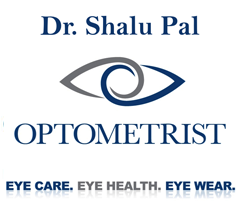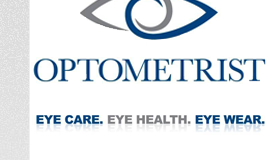Contents |
Hispanic Descent and Serious Eye Disease
People of Hispanic descent have higher risk for serious eye disease, according to a study at the University of Southern California’s Keck School of Medicine, published recently, and the Los Angeles Latino Eye Study (LALES), funded by the US National Eye Institute (NEI).
Serious eye disease, including glaucoma and cataracts, can cause of visual impairment but complications from diabetes and high blood pressure were also found to be significant factors for vision loss.
In addition, large epidemiological studies have shown that Hispanic children are more likely than either Asian or Caucasian children to have astigmatism, a refractive error that causes blurred vision at all distances.
Lack of Information, Lack of Care
According to the US National Eye Institute, more than 60% of eye conditions that can cause visual impairment go undetected and undiagnosed. A Survey of Public Knowledge, Attitudes and Practices found that Hispanics, as a group, are the least likely to have eye examinations, are the least knowledgeable about eye health in general, and have the lowest access to eye health information. Significantly, more than 70% of Hispanic people feel that losing their vision would have the greatest impact on their daily lives.
The NEI data also indicates that many people of Hispanic origin with eye issues were not aware of them.
There appears to be a genetic predisposition for systemic issues like diabetes and hypertension that are the cause of serious impairment of vision, although it is not known why this is so.
Diabetes and High Blood Pressure
The prevalence of both diabetes and high blood pressure is more than twice as high in Hispanics as that in other ethnic groups that have been studied; unfortunately, many people who have either or both of these conditions are often not aware of it, because there are often no symptoms, or the symptoms are unnoticed.
Retinopathy of diabetes occurs when the circulation of the blood becomes compromised in the back of the eye, causing swelling of the retinal tissues and the formation of new blood vessels. When new blood vessels form as a response to decreased circulation, they may break easily, causing bleeding in the eye and the formation of scars in the retinal tissue. Once such damage has occurred, it is not reversible; the vision loss is permanent.
Hypertension can cause depositing and scarring of the retina as well. Often called “the silent killer,” high blood pressure causes damage to the artery walls and can result in blocked blood vessels in the back of the eye, without any prior symptoms or signals. System-wide, hypertension is associated with heart disease and stroke; in the eye, a damaged blood vessel can break, causing damage to the area of the retina it serves.
In both these systemic diseases, regular physical examinations are the best way to diagnose and control their effects. Regular vision examinations can also be helpful in the diagnosis of each, because there are characteristic changes in the eyes that are visible to an eyecare practitioner.
Cataracts
Another vision condition often found among the Hispanic population is cataracts. Cataracts, which can be thought of as a progressive clouding of the inner lens of the eye, are thought to be caused by long-term exposure to excessive sunlight in the form of ultraviolet rays. The incidence of cataracts is also higher in those who smoke, have high blood pressure or diabetes, use alcohol to excess, and several other risk factors.
Symptoms of cataracts usually begin to become bothersome only when they have become moderate to severe. They can include:
- Light sensitivity
- Haloes around lights
- Poor night vision
- Double vision
- Cloudiness or blurred vision
- Frequent need for eyeglass prescription changes
The only treatment for cataracts is to have them surgically removed, but luckily, cataract extraction surgery is now one of the most successful and safest types of surgery performed.
Glaucoma
Glaucoma is a condition usually characterized by an increase of the pressure within the eye, intraocular pressure (IOP); the increased pressure interferes with circulation of oxygen and nutrients to the retina and optic nerve and can cause permanent vision loss. The most common type, primary open-angle glaucoma (POAG) causes no pain; the visual impairment usually begins in the peripheral vision and is not noticed by the patient until it is quite advanced. Only a vision examination including a measurement of IOP and testing of the field of vision can accurately diagnose this type of glaucoma.
Occasionally, a type of glaucoma without increased IOP occurs, known as low-tension; in these cases the circulation to the optic nerve is not adequate even in normal IOP ranges; testing of the visual field by an eyecare practitioner is the key to diagnosis here as well.
Rarely, the outflow of fluid within the eye is blocked or impaired which causes the IOP to increase rapidly and painfully; this type of closed-angle glaucoma is not usually associated with other types and is considered to be a separate issue. Symptoms of closed-angle glaucoma include:
- Sudden onset of pain
- Nausea and vomiting
- Haloes around lights
- Usually affects only one eye
- Pupil fixed and unresponsive to light
- Pupil size not contracted or dilated, but mid-range
In this type of glaucoma, immediate medical intervention is necessary; this is a vision-threatening emergency. Anyone experiencing this should seek help at the nearest medical center emergency department.
Prevention is the Best Treatment
People in the Hispanic community should be aware that they are at increased risk for vision impairment caused by systemic or eye disease. Also, as noted earlier, the incidence of astigmatism in Hispanic children makes it important that they have a vision exam each year. .
Regular medical exams as well as eye exams can help prevent vision impairment caused by these conditions. Early diagnosis and treatment as necessary can keep them from being significant hurdles in life. Once the damage is done, it cannot be reversed so those of Hispanic descent are urged to get their eyes checked on a regular basis.






